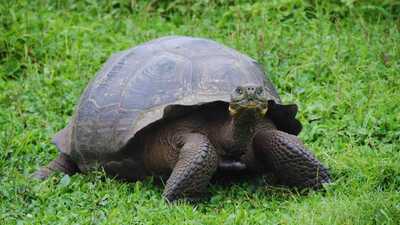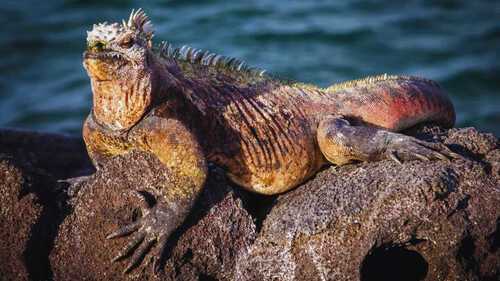The Galápagos Islands, a remote volcanic archipelago, located about 1,000 kilometers west of Ecuador, is probably one of the most unique places on Earth. In the scientific world, this archipelago is known as the natural laboratory, a place that influenced Charles Darwin's groundbreaking theory of evolution by natural selection. Did you know this? If no, read on.
The archipelago was formed between three and five million years ago through volcanic activity. In the process, 19 main islands and numerous islets were formed. The archipelago was first discovered by Europeans in 1535, but it remained largely uninhabited and unexplored until the 19th century. It is said that it was during Darwin's visit in 1835 that their isolation and biodiversity revealed clues to the origin of species.
The islands were designated a UNESCO World Heritage Site in 1978 and still hosts research at the Charles Darwin Research Station, established in 1964.

Wildlife encounters at Galapagos Giant tortoises Visitors can walk among these ancient giants at reserves like El Chato or Rancho Primicias on Santa Cruz Island. Some of these tortoises are over 100 years old and weigh up to 920 pounds.
Blue-footed boobies and other birdsLove birds and have a checklist to complete? Well, for an avid birder, the Galapagos is a haven. North Seymour Island is THE destination for spotting blue-footed boobies. If lucky, you will even be able to witness these birds' iconic mating dance. Then there's the frigatebirds with their striking red throat pouches. They are simply fantastic to observe. Darwin's finches can be found on Genovesa Island.

Marine iguanas and sea lionsFernandina Island boasts the largest population of marine iguanas, the world’s only sea-foraging lizards, often seen sunbathing on volcanic rocks. La Lobería on San Cristóbal is a prime spot for observing playful sea lions, which often approach visitors with curiosity.
Marine lifeSnorkeling and diving reveal vibrant underwater ecosystems. At Devil’s Crown near Floreana, snorkelers encounter colorful fish, sea turtles, and rays. Gordon Rocks off Santa Cruz is a diver’s dream, offering sightings of hammerhead sharks, manta rays, and whale sharks for experienced divers.
The archipelago was formed between three and five million years ago through volcanic activity. In the process, 19 main islands and numerous islets were formed. The archipelago was first discovered by Europeans in 1535, but it remained largely uninhabited and unexplored until the 19th century. It is said that it was during Darwin's visit in 1835 that their isolation and biodiversity revealed clues to the origin of species.
The islands were designated a UNESCO World Heritage Site in 1978 and still hosts research at the Charles Darwin Research Station, established in 1964.
Wildlife encounters at Galapagos Giant tortoises Visitors can walk among these ancient giants at reserves like El Chato or Rancho Primicias on Santa Cruz Island. Some of these tortoises are over 100 years old and weigh up to 920 pounds.
Blue-footed boobies and other birdsLove birds and have a checklist to complete? Well, for an avid birder, the Galapagos is a haven. North Seymour Island is THE destination for spotting blue-footed boobies. If lucky, you will even be able to witness these birds' iconic mating dance. Then there's the frigatebirds with their striking red throat pouches. They are simply fantastic to observe. Darwin's finches can be found on Genovesa Island.
Marine iguanas and sea lionsFernandina Island boasts the largest population of marine iguanas, the world’s only sea-foraging lizards, often seen sunbathing on volcanic rocks. La Lobería on San Cristóbal is a prime spot for observing playful sea lions, which often approach visitors with curiosity.
Marine lifeSnorkeling and diving reveal vibrant underwater ecosystems. At Devil’s Crown near Floreana, snorkelers encounter colorful fish, sea turtles, and rays. Gordon Rocks off Santa Cruz is a diver’s dream, offering sightings of hammerhead sharks, manta rays, and whale sharks for experienced divers.
You may also like

Ruler of Dubai, Sheikh Mohammed bin Rashid Al Maktoum, renames charity foundation in new decree

Angela Scanlon says 'well-known' celeb asked 'creepy' question before going live on air

All India 12 State Agniveer Vayu recruitment rally started in Odisha's Baripada; thousands young aspirants participate

Brit mums fighting for their lives in Ibiza after being mowed down by car pictured

Ruben Amorim given fresh transfer headache by manager as Man Utd exit hope detailed





